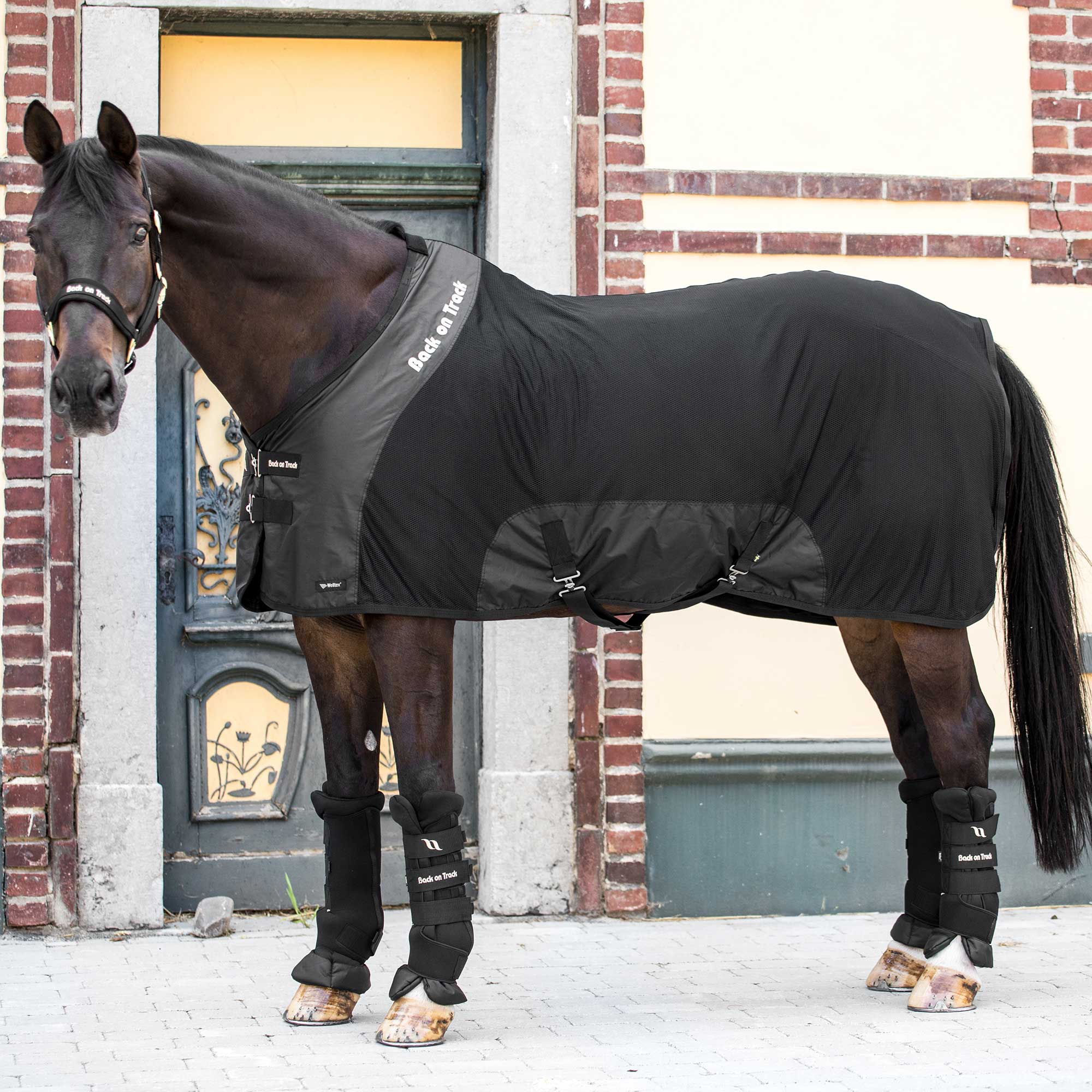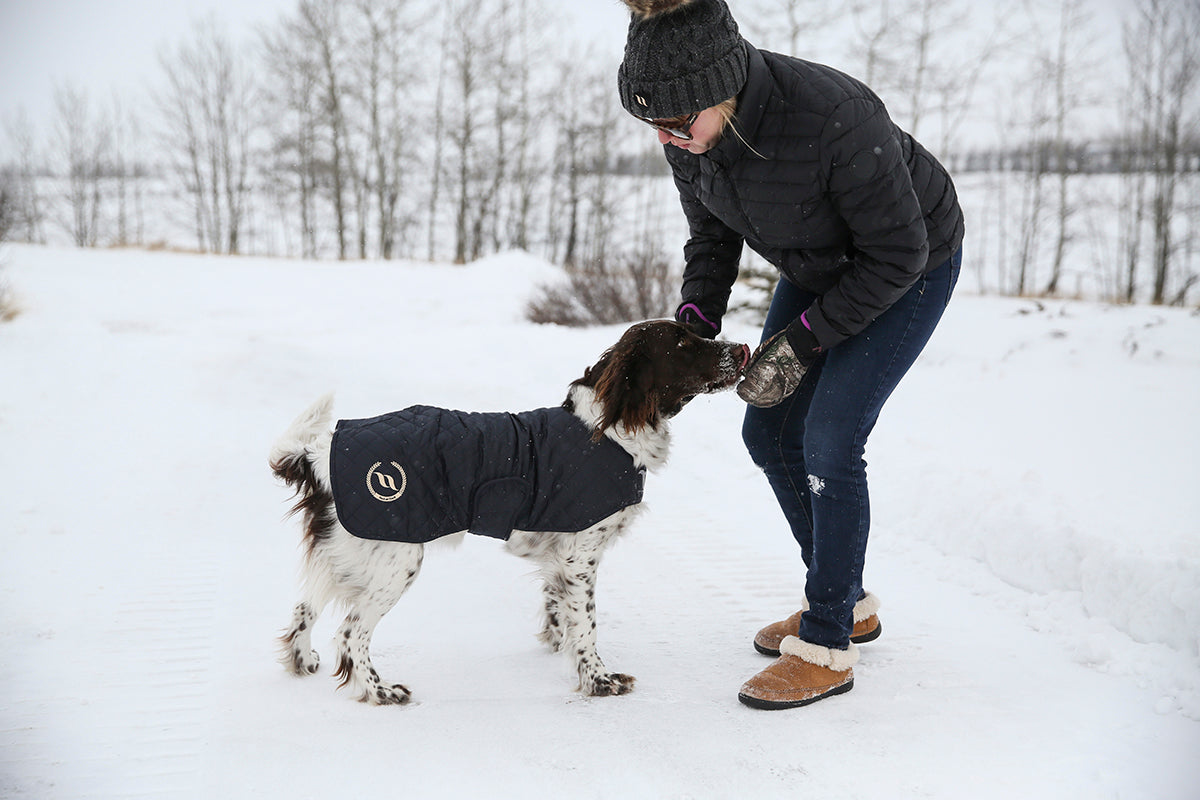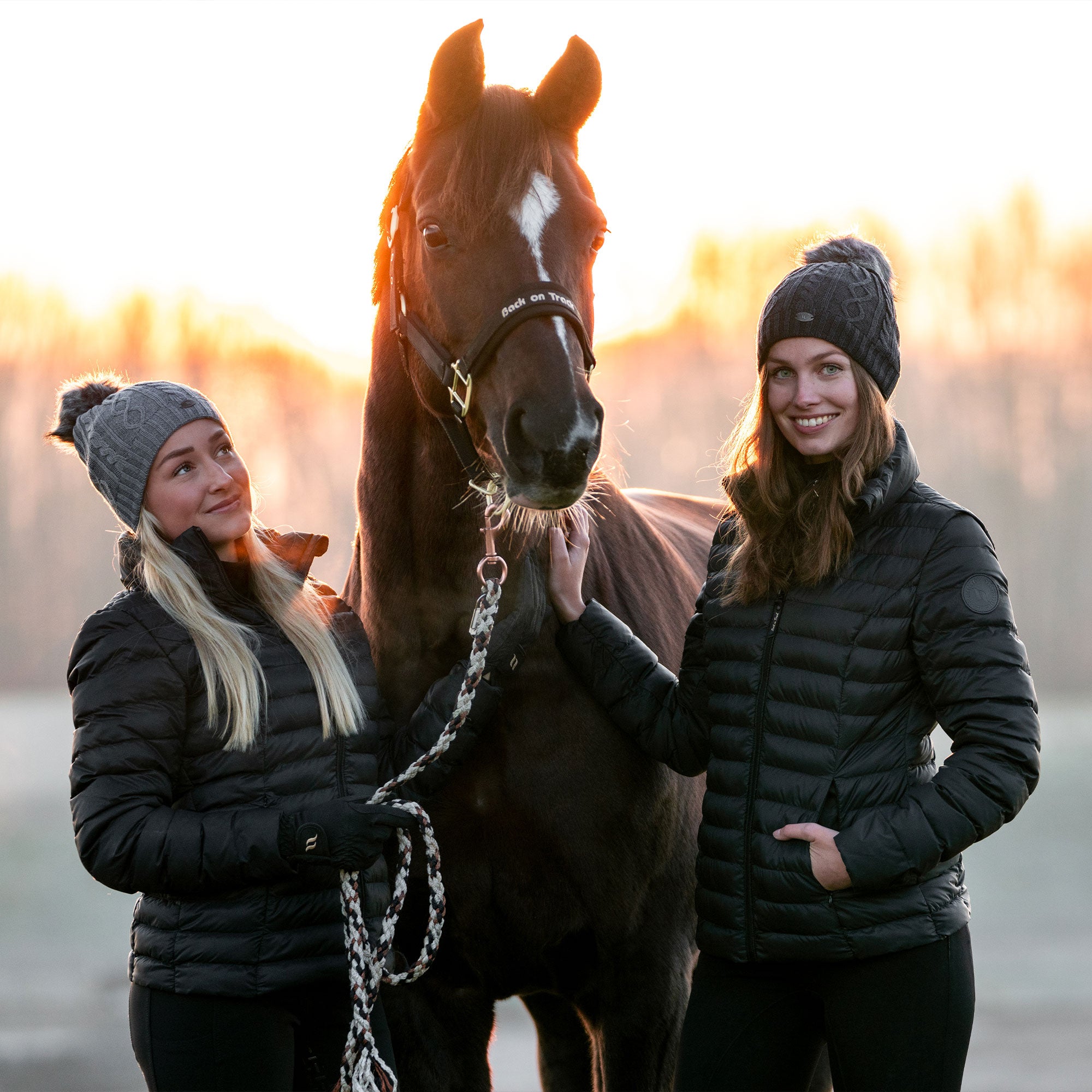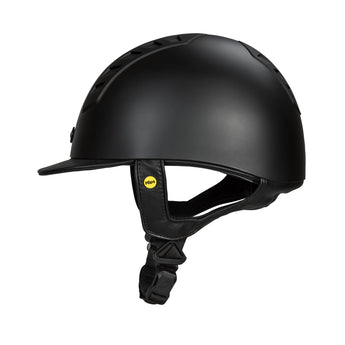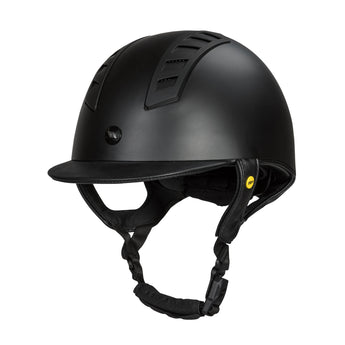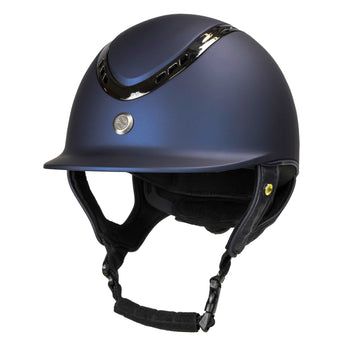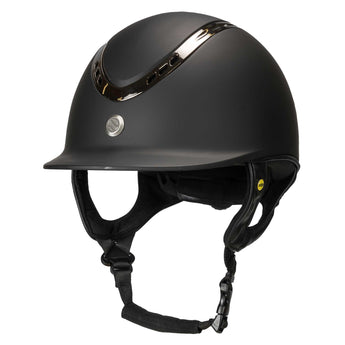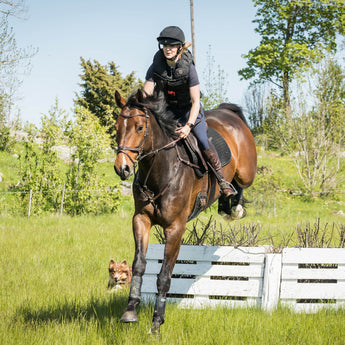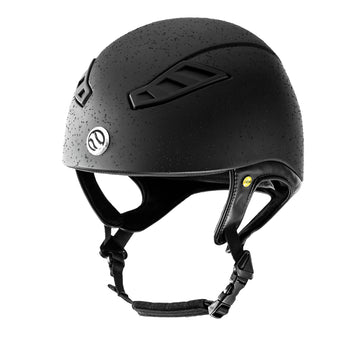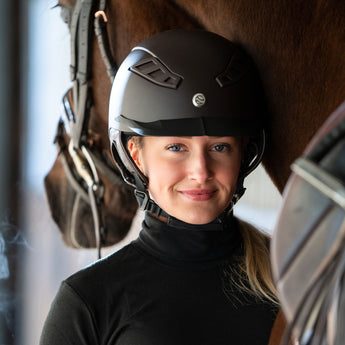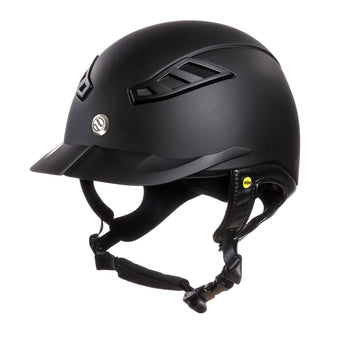
Rotational forces from an angled impact can cause more strain on your brain than a single direct impact. MIPS helmets help protect equestrians and other athletes with an advanced safety system that reduces these forces.
Back on Track was the first equestrian brand to offer MIPS riding helmets. Keep reading to learn more about MIPS technology and why MIPS designs are the safest helmets for equestrians.
History of MIPS?
Developed in Sweden by a brain surgeon and biomechanics scientist, the MIPS safety system revolutionized helmet safety. Hans von Holst and Peter Halldin presented their idea for the MIPS in 1996.
In 2001, Halldin published a scientific study evaluating the MIPS design and new oblique angle tests for helmet safety. The study found MIPS helmets reduced rotational acceleration of the head by up to 50% compared to conventional helmets.[1]
MIPS quickly gained popularity with motorcyclists, snowboarders, skiers, climbers, cyclists, and construction workers. The technology is now available in certain equestrian helmets, including Back on Track Trauma Void riding helmets.
What is MIPS?
MIPS stands for Multi-Directional Impact Protection System. The MIPS safety system is a helmet-integrated, low-friction layer designed to reduce rotational motion transferred to the brain from angled impacts to the head.
This layer absorbs and redirects rotational force instead of transmitting the force to the brain during an impact. Flexible bands clip the MIPS liner to the helmet’s foam in multiple anchor points.
How does MIPS work?
MIPS helmets have a thin (0.5–0.7 mm), ventilated, custom-cut, low-friction layer inside the helmet liner. The layer is held in place by an assemblage of composite anchors that flex in all directions, allowing slight movement in response to angled impact.
The slight movement (10-15 mm) relative to the helmet at the moment of an angled impact allows the head to continue in the direction it originally traveled.
Research shows this effect redirects some of the rotational forces and energies acting on the head at impact, reducing strain on the brain.[2]
Your helmet must fit you correctly to provide optimal protection. The MIPS layer does not impact comfort thanks to its thinness, lightness, and integration into the helmet’s existing ventilation.
How is MIPS tested?
Scientists and engineers developed the MIPS system based on over 25 years of extensive research.
Leading researchers at the KTH Royal Institute of Technology and the Karolinska Institute in Sweden created a joint neuronics department that combined neuroscience and biomechanics to test helmet safety.
MIPS evolved alongside research projects in the neuronics department, which also developed a helmet test rig for angled impacts.[1]
In addition to the angled impact test, MIPS uses an advanced computerized finite element model of the head and neck that helps predict injury in impact simulations.[3]
The computerized finite element model is integral to verifying that your helmet, with MIPS inside, delivers higher safety properties than the helmet without MIPS.
View a video of how MIPS helmets are tested on the Mips website.
Trauma Void MIPS Riding Helmets
Unlike some equestrian helmet brands, all Back on Track Trauma Void helmets have MIPS.
Equestrians have a high risk of angled impacts from falls, so investing in a helmet that helps protect your brain from rotational forces is critical. No helmet can fully protect the brain from the consequences of a fall, but Trauma Void helmets are a good first step in helping to avoid serious injury or death. READ WARNING - DISCLAIMER BEFORE PURHASING.
Choose a helmet with cutting-edge protective technology backed by extensive research and testing. Check out Trauma Void MIPS riding helmets.
References:
- Halldin, P. et al. A new oblique impact test for motorcycle helmets. Int J Crashworthiness. 2001.
- Bottlang, M. et al. Impact Performance Comparison of Advanced Bicycle Helmets with Dedicated Rotation-Damping Systems. Ann Biomed Eng. 2020.
- Kleiven, S. Evaluation of head injury criteria using an FE model validated against experiments on localized brain motion, intra-cerebral acceleration, and intracranial pressure. Int J Crashworthiness. 2006.

